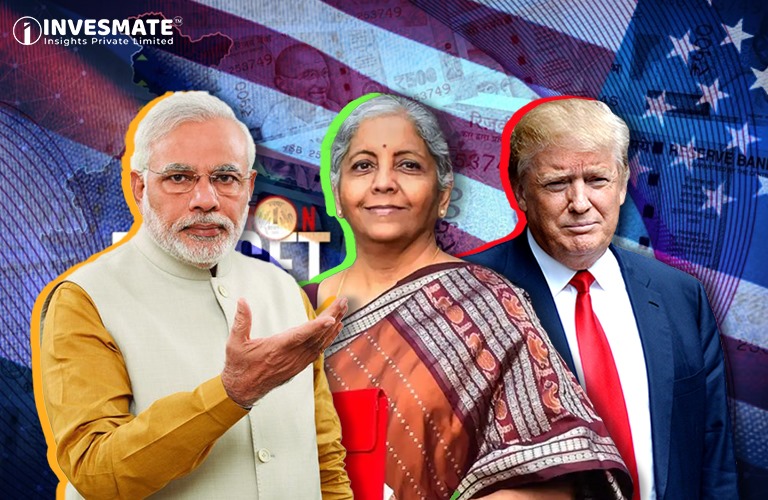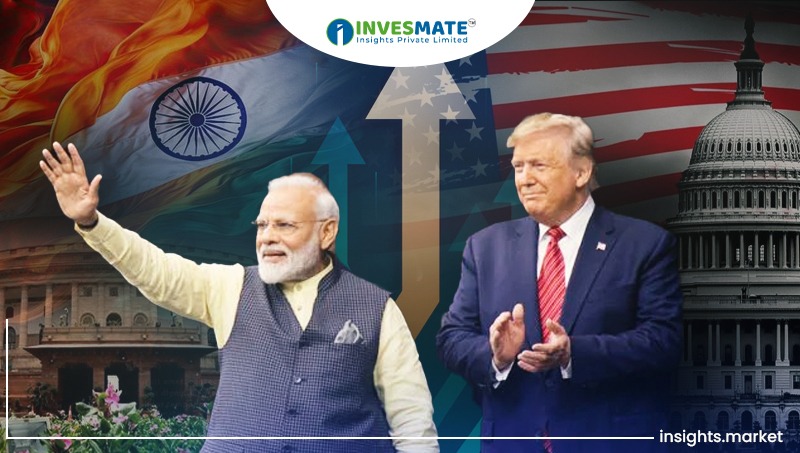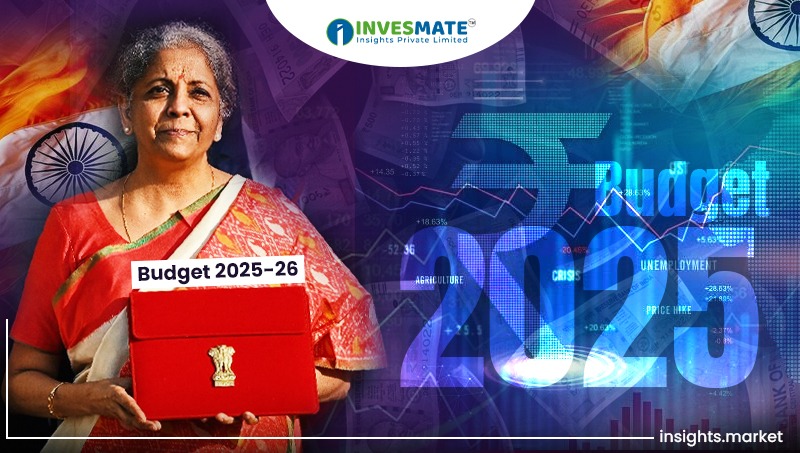![]()
Trump’s Policies: A Global Trade Shift and Implications for India
Trump’s second term in office is expected to bring a renewed focus on trade policies. Higher tariffs on countries like China could affect global supply chains, impacting Indian industries such as textiles, IT services, and pharmaceuticals. These sectors may face higher costs and limited access to markets.
Uncertainty around U.S. policies could also lead to capital outflows from India, putting additional pressure on the rupee (currently ₹86.60 against the U.S. dollar). With crude oil becoming more expensive, inflation may rise, leading to higher household costs.
However, there are also potential opportunities. For example, the U.S.-India nuclear deal could boost energy security and open doors to new economic growth through improve civil nuclear cooperation.
India’s Economic Challenges and Budget 2025-26
Expectations from Key Sectors in Union Budget 2025
As the Union Budget 2025 approaches, various sectors are hoping for policies that promote growth, affordability, and innovation. Here’s a summary of key viewpoints from industry leaders and analysts:
Healthcare: Invest in AI-driven health-tech, expand medical infrastructure, and promote data-driven solutions to improve healthcare outcomes.
Real Estate: Raise the tax deduction limit for home loan interest under Section 24(b) to ₹5 lakh, streamline project approvals, and rationalize GST rates to support the industry.
Insurance and Investments: Introduce tax exemptions for term insurance premiums, increase the ELSS investment limit to ₹3 lakh, and bring back LTCG benefits for debt schemes.
Additionally, macroeconomic measures such as raising the standard deduction limit, expanding tax slabs for middle-income earners, and stabilizing the rupee through higher import duties would support growth and fiscal stability.
Key Challenges Before The Union Budget
India faces several economic challenges that must be addressed before the Budget:
- Weak Urban Demand: Private consumption has slowed, reflecting financial strain on households and high borrowing costs.
- Slowdown in Investments: Investment in infrastructure and industries remains weak, creating concerns about long-term growth.
- Ongoing Unemployment: Unemployment remains high, with job creation failing to keep up with public investments.
- GST Collection Issues: Slow GST growth is putting fiscal pressure on state governments.
- Rural Suffering: Inflation and unpredictable monsoons have hurt rural consumption, increasing financial stress for many households.
India’s Economic Predictions for FY25
Despite the challenges, there are signs of recovery in FY25:
- Growth: The recovery will likely be driven by public investments, agricultural growth, and fiscal stimulus.
- Inflation: Inflation should be kept under control, though high crude oil prices could pose a risk.
- GST Collections: Collections may improve, potentially reaching ₹2 lakh crore by Q4 FY25.
- Middle-Class Relief: Tax breaks for the middle class could increase disposable income and encourage consumption.
Opportunities Amidst The Global Storm
Even in the face of challenges, India has several opportunities to strengthen its economy:
- Energy Security: The U.S.-India nuclear deal can help reduce reliance on fossil fuels and support renewable energy goals.
- New Opportunities in Manufacturing: As companies move away from China, India can become a key manufacturing hub, supported by the Make in India initiative and infrastructure investments.
- Lower Oil Prices: A global slowdown may lead to lower oil prices, easing fiscal pressure.
- Grow Export Competitiveness: Subsidies and tax breaks for key industries like textiles and pharmaceuticals can help India maintain its competitive edge in global markets.
Recommendations for The Union Budget
To address these challenges and support recovery, the government should focus on:
- Tax Relief: Simplifying tax structures and raising exemptions to boost disposable income.
- Boosting Investments: Making it easier to do business to attract private investment.
- Sectoral Support: Providing targeted incentives for healthcare, education, and MSME growth.
- Balanced Fiscal Approach: Increasing capital expenditure while maintaining fiscal discipline to avoid long-term risks.
Conclusion
2025 presents a critical opportunity for India’s economy. Despite the global uncertainties and local challenges, strategic reforms, partnerships, and targeted policies can pave the way for a strong recovery. The Union Budget will play a pivotal role in stimulating private sector activity, creating jobs, and addressing sectoral disparities. By focusing on innovation, infrastructure, and inclusivity, India can turn these challenges into opportunities and ensure a brighter future for all its citizens.
FAQs
How will Donald Trump’s second term affect India’s economy?
Focus areas include tax reforms, increased healthcare and education spending, infrastructure development, and incentives for manufacturing and exports.
The rupee may remain under pressure due to global uncertainties but could stabilize as policies adjust.
By diversifying exports, boosting domestic manufacturing, investing in infrastructure, and pursuing trade agreements.







4 Responses
Informative yet compact blog
Great information, thank you
Great information…
katana